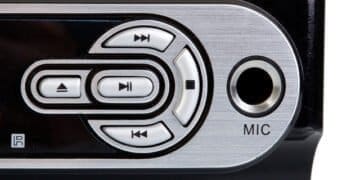The smart home market has undergone tremendous growth in recent years, driven by rapid technological advancements and evolving consumer preferences for convenience, efficiency, and connectivity.
With a projected value of $338.28 billion by 2030, smart home companies are at the forefront of revolutionizing how we interact with our living spaces.
Homeowners worldwide are increasingly seeking seamless integration of automated systems, security features, and energy-efficient solutions into their homes, paving the way for a flourishing smart home industry.
This surge in demand has sparked innovation across a wide range of smart home products and platforms, from voice-activated assistants and intelligent lighting controls to comprehensive home automation systems and integrated smart home hubs.
Leading companies in this space are continuously pushing boundaries, offering cutting-edge solutions that cater to diverse consumer needs and preferences, while exploring new avenues for growth and market penetration.
Understanding Smart Home Technology Companies

Smart home technology involves incorporating cutting-edge digital and electronic capabilities into different facets of a residence, facilitating automation, control, and monitoring through an interconnected network of devices and systems.
Leveraging sensors, wireless communication, and advanced algorithms, residents can remotely manage tasks, utilize voice commands for home control, and receive real-time updates via mobile applications.
The overarching objective is to establish a responsive and interconnected living environment tailored to occupants’ preferences, fostering a home that is not only more energy-efficient and secure but also significantly more convenient.
The landscape of smart home products encompasses a wide range of devices and technologies, from voice assistants and energy-efficient lighting control to next-level home automation solutions and integrated smart home hubs.
There is a wide variety of smart home solutions available to today’s homeowner, including smart speakers, smart thermostats, smart lights, smart security cameras, smart door locks, smart doorbells, smart plugs, and more.
These types of smart home devices collectively contribute to creating a connected and intelligent living environment, offering convenience, energy efficiency, and enhanced security.
Key players in the industry
The smart home industry is dominated by several key players, each offering innovative solutions and shaping the market’s trajectory. Companies like Samsung’s SmartThings, LG ThinQ, Eufy, Govee, Arenti, SwitchBot, Vivint, and Rachio are at the forefront of this revolution.
Samsung’s SmartThings is a platform that allows users to control and monitor their compatible devices through a single app, acquired by Samsung in 2014.
LG ThinQ enables users to control and monitor their LG smart appliances from their phones or other smart devices.
Eufy offers easy-to-use smart home devices like smart locks and robotic vacuums, while Govee provides an eclectic mix of smart home solutions ranging from smart lights to home security systems.
Arenti specializes in indoor and outdoor cameras, baby monitors, and dog cameras, catering to various surveillance needs.
SwitchBot’s range of intelligent products can upgrade door locks, control curtains, or simply push a button to light up living spaces. Vivint, a dominant force in the U.S. smart home market, offers an array of innovative smart home products and solutions with a focus on enhancing security and convenience.
Rachio takes the guesswork out of gardening with smart yard solutions designed to optimize water use and plant health.
Importance and growth of the market
The smart home market is experiencing significant growth, driven by evolving consumer preferences and technological advancements.
According to Fortune Business Insights, the global smart home market size was valued at $80 Billion in 2022 and is projected to grow to $338 billion by 2030, highlighting the increasing value of adding smart home devices to enhance a home’s value, appearance, and efficiency.
A Statista study estimates that the number of smart homes in the United States will increase to 69.91 million, indicating that consumers are seeking ways to make their homes more connected and efficient.
The evolution of smart home technology is adding more devices and mixing efficiency and personalization to homes, with AI set to revolutionize smart homes by offering personalized experiences and learning from users’ habits and preferences.
Statista projects that the smart devices market in the United States will have a compound annual growth rate of 10.66% between 2022 and 2028, with intelligent appliances being highly popular.
Additionally, the number of smart home users is predicted to grow by 11.43% from 2022 to 2028, resulting in significant market growth.
As the industry progresses, keeping an eye on major players, technological advancements, and investment trends will be crucial for anyone looking to embrace the next generation of home automation.
Product Offerings and Innovations

Smart home devices and solutions
The smart home industry offers a diverse range of products and solutions designed to enhance convenience, efficiency, and security within the home environment.
These days, there is a smart version of nearly every home device imaginable, from lighting and thermostats to security cameras and doorbells.
Many of these smart home devices connect to the internet, allowing users to control and monitor them remotely through companion mobile apps or voice commands.
Companies like SwitchBot specialize in creating devices that transform traditional home appliances into smart ones, offering products such as smart switches, curtain motors, and thermometers.
Arenti focuses on smart security cameras, providing users with remote access through their app.
Govee offers affordable and user-friendly LED lighting solutions, smart bulbs, lamps, and environmental sensors that can be monitored via a mobile app.
Eufy, on the other hand, offers a range of smart home products, including lighting, security cameras, and smart doorbells, designed to simplify and streamline daily life.
Innit, a “smart kitchen platform,” integrates its app and algorithm with appliances and modern cookbooks, enabling a seamless cooking experience.
Wyze Labs offers affordable and innovative home security and automation products, such as smart cameras, doorbells, sensors, and smart plugs, designed for easy integration with popular smart home platforms.
Artificial intelligence and voice control integration
Artificial intelligence (AI) plays a crucial role in enhancing the capabilities of smart home devices and solutions.
AI technology enables the assimilation of user behaviors and preferences, allowing for the creation of tailored automation solutions.
AI-driven systems can anticipate user needs and adjust settings accordingly by analyzing data on individual habits, preferences, and usage patterns.
Voice control integration is another key feature offered by many smart home companies.
With Amazon Alexa and Google Assistant, users can set up routines for their devices to work together and perform multiple tasks simultaneously, such as adjusting the temperature and lighting when arriving home.
Apple HomeKit allows users to control devices with Siri voice commands or from an Apple Watch and create scenes to trigger multiple devices at once.
AI algorithms can analyze energy consumption patterns within smart homes, optimizing device usage for maximum efficiency and reducing energy waste and associated costs for homeowners and utility companies.
AI-powered predictive maintenance systems continuously monitor the health and performance of smart home devices, detecting potential issues before they escalate into costly failures.
Additionally, AI-driven security systems utilize advanced facial recognition and anomaly detection technologies to strengthen home protection, identifying and responding to suspicious activities, intruders, or emergencies by analyzing video feeds in real-time.
Cutting-edge technologies and features
Smart home companies are continuously pushing boundaries and introducing cutting-edge technologies and features to enhance the user experience and meet evolving consumer needs.
The rollout of Matter, a new smart home interoperability standard, makes it easier than ever to set up and integrate connected gadgets.
Companies like Amazon are incorporating innovative features into their smart home devices.
The latest Echo Dot, for example, features an LED clock built into its face, complementing its rich, room-filling sound and providing additional functionality, such as displaying time, temperature, and song titles.
The Echo Hub, an always-on 8-inch display, acts as an ideal smart home dashboard, with customizable widgets for controlling and monitoring various smart home devices.
AI integration is also enabling new and innovative features in smart home devices. For instance, AI-powered smart coffee machines can learn consumers’ morning routines and prepare their favorite perfectly brewed cup of coffee at the exact time they wake up.
AI systems can adjust lighting and temperature to individual preferences, creating a soothing ambiance for morning routines.
Furthermore, AI will provide personalized entertainment recommendations by learning users’ preferences and habits, suggesting TV shows, music, and other media tailored to individual tastes.
AI-driven health monitoring will become a vital feature in smart homes, with devices tracking vital signs, sleep patterns, and environmental factors, offering personalized health insights and recommendations.
By integrating AI, smart home companies are enhancing the intelligence, efficiency, and adaptability of their products, presenting new business opportunities and catering to customers’ evolving needs.
If you enjoy the reading!!! I have other content related to this article. Click here
Market Trends and Consumer Preferences

Rising demand for convenience and automation
Convenience is a driving force behind the adoption of smart home technology, with 46% of consumers citing it as the most significant factor influencing their usage of smart home devices.
The ability to control and automate various aspects of the home environment, from lighting and temperature to security systems and appliances, appeals to modern homeowners seeking a seamless and effortless living experience.
Smart home solutions offer the convenience of remote access and control, allowing users to manage their homes from anywhere using mobile applications or voice commands.
This level of connectivity and automation not only enhances comfort but also provides peace of mind, enabling homeowners to monitor their properties and receive real-time updates on their devices’ status.
Voice control integration has become a key feature in smart home technology, with virtual assistants like Amazon Alexa and Google Assistant enabling users to set up routines and control multiple devices simultaneously through voice commands.
The increasing sophistication of artificial intelligence (AI) and machine learning algorithms further enhances the convenience factor, as smart home systems can learn user preferences and habits, anticipating and adjusting settings accordingly.
Energy-saving and sustainability trends
Energy efficiency and sustainability are significant drivers in the smart home market, as consumers become increasingly conscious of their environmental impact and the potential cost savings associated with eco-friendly solutions.
Smart home technologies, such as energy-efficient appliances, smart thermostats, and solar power systems, offer homeowners the opportunity to reduce their carbon footprint while simultaneously lowering utility bills.
According to Climate Action, energy-efficient homes can sell for approximately 2.7% more than comparable homes without sustainability upgrades, highlighting the market demand for eco-friendly living spaces.
Energy-efficient upgrades not only lead to reduced energy bills over time but also contribute to a sustainable future by lowering greenhouse gas emissions and combating climate change.
Smart home systems equipped with AI capabilities can analyze energy consumption patterns and optimize device usage for maximum efficiency, reducing energy waste and associated costs.
For instance, intelligent lighting and temperature control systems can adjust settings based on occupancy, natural light availability, and weather conditions, minimizing unnecessary energy consumption.
Emerging smart home applications and use cases
As the smart home industry continues to evolve, new applications and use cases are emerging, catering to diverse consumer needs and preferences.
One notable trend is the integration of health and wellness technologies into smart home ecosystems.
Smart devices such as air quality sensors, smart beds, and intelligent appliances can monitor and promote healthier living environments by detecting allergens, tracking sleep patterns, and suggesting nutritious recipes based on individual preferences.
Smart home solutions are also finding applications in enhancing home security and safety.
Advanced facial recognition and anomaly detection technologies, coupled with smart security cameras and automated door locks, can strengthen home protection by identifying and responding to suspicious activities or intruders in real-time.
Furthermore, the concept of smart cities is gaining traction, where smart homes will integrate with broader urban infrastructure, sharing data to improve traffic flow, energy usage, and emergency response times.
This interconnectivity will create a more efficient and responsive living experience, blending the convenience of smart home technology with the benefits of a connected urban environment.
Challenges and Opportunities
Privacy and security concerns
The proliferation of smart home devices and the vast amounts of data they generate have raised significant privacy and security concerns.
Smart homes are becoming increasingly interconnected, comprising an array of consumer-oriented IoT devices ranging from smartphones and smart TVs to virtual assistants and CCTV cameras.
These devices often have cameras, microphones, and other sensors that can access sensitive information within our most private spaces—our homes.
An important question arises: can we trust that these devices in our homes are safely handling and protecting the sensitive data they have access to?
While most users view local networks as a trusted and safe environment, a study by researchers from IMDEA Networks, Northeastern University, and others revealed new threats associated with the inadvertent exposure of sensitive data by IoT devices within local networks using standard protocols such as UPnP or mDNS.
These threats include the exposure of unique device names, UUIDs, and even household geolocation data, all of which can be harvested by companies involved in surveillance capitalism without user awareness.
According to Vijay Prakash, a PhD student from NYU Tandon who co-authored the study, “analyzing the data collected by IoT Inspector, we found evidence of IoT devices inadvertently exposing at least one PII (Personally Identifiable Information), like unique hardware address (MAC), UUID, or unique device names, in thousands of real world smart homes”.
Furthermore, these local network protocols can be employed as side-channels to access data that is supposedly protected by several mobile app permissions, such as household locations.
As Narseo Vallina-Rodriguez, Associate Research Professor of IMDEA Networks, explained, “A side channel is a sneaky way of indirectly accessing sensitive data. For example, Android app developers are supposed to request and obtain users’ consent to access data like geolocation.
However, we have shown that certain spyware apps and advertising companies do abuse local network protocols to silently access such sensitive information without any user awareness”.
If you want to learn more about this topic…. Click here
Interoperability and compatibility issues
One of the significant challenges facing the smart home industry is the lack of interoperability and compatibility between different devices, systems, and platforms.
The integration of various IoT systems increases the complexity of the network, which in turn raises significant security challenges. Each additional device and protocol can introduce vulnerabilities, making the entire network more susceptible to attacks.
The need for a variety in hardware, communication protocols, and data formats causes the lack of interoperability in the IoT ecosystem.
Devices and systems often operate on different frequencies and use protocols such as Zigbee, Bluetooth, and Wi-Fi, each with its characteristics and intended purposes.
The lack of a common standard leads to operational inefficiencies and increased costs due to the need for additional middleware or adapter software to facilitate communication between devices.
Proprietary technologies pose another significant barrier to IoT interoperability.
Many manufacturers develop their unique protocols and standards to differentiate their products.
However, this practice often leads to ecosystems that are not just closed but are also incompatible with other systems, creating silos within the IoT landscape.
This fragmentation results in vendor lock-in scenarios, where consumers and businesses are confined to products from specific providers, inhibiting flexibility and choice.
Moreover, many IoT devices are designed to be cost-effective and resource-efficient, which often means they have limited processing power, memory, and battery life.
These limitations challenge the implementation of complex interoperability protocols and robust security measures, which typically require more resources.
Balancing the performance of these devices while ensuring they can communicate effectively across various platforms remains a key challenge in expanding the capabilities and reach of IoT networks.
Opportunities for growth and innovation
Despite the challenges, the smart home industry presents numerous opportunities for growth and innovation.
According to a survey by Jabil, 63% of IoT device OEMs believe that easy and reliable connectivity is most important to the success of their solutions.
However, 68% of the participants face challenges in developing connectivity for their solutions, indicating a significant opportunity for companies that can address this issue.
Data security is another aspect of smart home interoperability that poses additional challenges and opportunities.
As solution providers struggle to manage the back end of connectivity, there is a need for robust data protection processes to prevent malicious actors from accessing sensitive information.
Regulations like the General Data Protection Regulation (GDPR) in the European Union may be an early indicator of more stringent data privacy laws to come, creating opportunities for companies that can offer secure and compliant solutions.
On a positive note, IoT device manufacturers are taking steps to protect customers’ data privacy.
According to the Jabil survey, only 10% of respondents said they don’t use any technology to implement device security.
The most common technologies used by respondents were Secure Element (65%), Edge AI (42%), and PKI (32%), indicating a growing awareness of the importance of data security in the smart home industry.
Furthermore, the development of industry-wide standards and protocols, such as Matter, presents an opportunity to redefine the smart home connectivity ecosystem and address the interoperability challenges.
Matter, a new smart home interoperability standard, aims to make it easier than ever to set up and integrate connected gadgets, potentially revolutionizing the smart home industry by enabling seamless communication between devices from different manufacturers.
As the smart home market continues to grow, companies that can address the challenges of privacy, security, interoperability, and data management will be well-positioned to capitalize on the numerous opportunities for growth and innovation in this rapidly evolving industry.
Key Players and Company Profiles
Major smart home technology companies
The smart home market is dominated by several key players, each offering innovative solutions and shaping the market’s trajectory. Companies like Samsung’s SmartThings, LG ThinQ, Eufy, Govee, Arenti, SwitchBot, Vivint, and Rachio are at the forefront of this revolution.
Samsung SmartThings
Samsung’s SmartThings is a platform that allows users to control and monitor their compatible devices through a single app, acquired by Samsung in 2014. It works with hundreds of compatible devices, including lights, cameras, voice assistants, locks, and thermostats. The SmartThings Hub is the brain of the smart home, connecting wirelessly with a wide range of smart devices and enabling them to work together.
LG ThinQ
LG ThinQ is a smart home solution that allows users to control and monitor their LG smart appliances from their phone or other smart devices. The ThinQ app provides notifications and diagnoses the state of products periodically, and the platform is integrated with Google Assistant and Amazon Alexa.
Eufy
Eufy offers easy-to-use smart home devices, like smart locks, robotic vacuums, and security cameras with facial recognition and local storage. Their products are used inover 5,000,000 residences worldwide, and they continue to innovate with features like AI-powered movement tracking across multiple devices.
Govee
Govee provides an eclectic mix of smart home solutions, ranging from smart lights to home security systems. Their products are designed for functionality and flair, with LED strip lights that dance to music or respond to voice commands. Govee offers a community page where users can share experiences and suggestions.
Arenti
Arenti specializes in indoor and outdoor cameras, baby monitors, and dog cameras, with an array of options designed to satisfy various surveillance needs. Their products strike a balance between quality and cost, offering top-notch smart home security solutions at affordable prices.
SwitchBot
SwitchBot’s range of intelligent products can upgrade door locks, control curtains, or turn traditional light switches into smart ones. They offer hubs like the SwitchBot Hub Mini, compatible with Alexa, Google Assistant, and Siri, and curated bundles for affordable smart home solutions.
Vivint
Vivint is a dominant force in the U.S. smart home market, offering an array of innovative smart home products and solutions with a focus on enhancing security and convenience. Their product lineup includes the Vivint Smart Hub, doorbell cameras, smart thermostats, and smart locks, compatible with popular smart home platforms.
Rachio
Rachio takes the guesswork out of gardening with smart yard solutions designed to optimize water use and plant health. Their Smart Sprinkler Controller controls the watering schedule from a smartphone, and the Rachio 3 seamlessly switches between weather stations for uninterrupted service.
Product portfolios and market share
These companies offer a diverse range of smart home products and solutions, catering to various consumer needs and preferences.
Amazon’s product portfolio includes Echo devices with Alexa, Ring doorbells and cameras, and Blink security cameras, enabling smart home integration through Alexa.
Google’s offerings encompass Google Home speakers, Nest thermostats, cameras, and doorbells, all controlled through the Google Assistant.
Apple’s HomeKit ecosystem includes the HomePod, HomeKit smart home platform, and integration with Siri for voice control.
Samsung’s SmartThings platform works with hundreds of compatible devices, including lights, cameras, locks, and thermostats, controlled through the SmartThings app and hub.
Philips’ Hue brand offers smart lighting systems, including bulbs, light strips, and fixtures, controllable via the Hue app and compatible smart home platforms.
Ecobee specializes in smart thermostats with room sensors, offering energy-saving features, remote access, and integration with voice assistants and smart home platforms.
August Home provides smart locks, doorbells, and cameras for home security and access control, integrated with popular smart home platforms.
Ring, owned by Amazon, offers video doorbells and security cameras for home monitoring and surveillance.
Logitech’s product line includes Harmony smart home remote controls and Circle security cameras.
Wyze is known for affordable smart home devices, including cameras, bulbs, and sensors.
These companies hold significant market shares in their respective product categories, driving innovation and shaping consumer preferences in the smart home industry.
Competitive strategies and future plans
To stay ahead in the highly competitive smart home market, these companies employ various strategies and have ambitious future plans.
Many companies focus on expanding their product portfolios and enhancing interoperability with other smart home ecosystems.
For instance, Samsung’s SmartThings works with the Matter connectivity standard, supported by over 280 companies, allowing users to integrate devices from different manufacturers.
Companies like LG and Tado are exploring service-based business models, offering flexible subscription options and personalized appliance features through software updates.
Eufy and Govee prioritize innovation, with Eufy leveraging AI for movement tracking across devices and Govee winning design awards for their user-centric products.
Arenti emphasizes data security by hosting its cloud service on Amazon’s AWS, ensuring secure storage of user data.
SwitchBot focuses on user-friendly and affordable products, making home automation accessible to a wider audience.
Vivint, while offering premium quality products, also operates a charitable wing, Vivint Gives Back, aimed at uplifting the lives of children with intellectual disabilities.
Rachio takes a software-centric approach, providing a holistic solution for smart yard care through its innovative controllers and water-saving tools.
These companies continuously explore new technologies, partnerships, and business models to stay competitive and meet evolving consumer demands in the rapidly growing smart home market.
Future of Smart Home Technology

Emerging technologies and advancements
As we advance into 2024, smart home technology continues to evolve, bringing new innovations that promise to make our lives more convenient, secure, and energy-efficient.
One notable advancement is the integration of advanced facial recognition and motion-sensing technologies, enabling smart home security systems to distinguish between residents, visitors, and intruders, thereby enhancing security while maintaining privacy.
Artificial Intelligence (AI) is set to revolutionize smart homes by offering more personalized experiences.
AI systems will learn from users’ habits and preferences, automatically adjusting lighting, temperature, and even playing music based on their mood or the time of day.
Additionally, smart appliances will become more autonomous, with refrigerators capable of ordering groceries and laundry machines selecting optimal wash cycles based on fabric type.
Domestic robots for cleaning, cooking, or even pet care are expected to become more commonplace.
Virtual and augmented reality will become integral parts of the home entertainment experience, offering immersive gaming, movie watching, and interactive fitness sessions.
Moreover, smart homes will play a crucial role in health monitoring, with wearables syncing with home systems to monitor vital signs and alert medical professionals in case of an emergency.
Integration with other smart technologies
The Internet of Things (IoT) is expanding, allowing for seamless integration and connectivity between devices.
This means appliances like refrigerators could communicate with smartphones to notify users when running low on groceries, or ovens could start preheating while users are on their way home.
The concept of smart cities is gaining traction, where smart homes will integrate with broader urban infrastructure, sharing data to improve traffic flow, energy usage, and emergency response times.
This interconnectivity will create a more efficient and responsive living experience, blending the convenience of smart home technology with the benefits of a connected urban environment.
Matter, a groundbreaking industry-unifying standard, will ensure smart home devices are compatible with each other, regardless of the manufacturer.
This means lights, thermostats, fridges, and even coffee makers can communicate across different ecosystems, enabling seamless integration and connectivity.
Potential impact on daily life and society
The evolution of smart home technology is adding more devices and mixing efficiency and personalization into our homes.
A Statista study estimates that the number of smart homes in the United States will increase to 69.91 million by 2024, indicating that consumers are seeking ways to make their homes more connected and efficient.
Smart homes will offer more than just technological advances; they will provide customizable living experiences.
With modular designs and smart materials, residents can easily alter their living spaces to suit their changing needs or preferences.
From an environmental perspective, smart homes are going green with energy-efficient appliances, smart thermostats, and solar-powered systems.
These technologies not only reduce carbon footprint but also significantly lower utility costs.
The Internet of Things (IoT) can make entire industries more sustainable by reducing waste production and optimizing resource usage.
Innovative capabilities in appliances have become the norm for many consumers because they simplify everyday lives and daily routines.
Statista projects that the smart devices market in the United States will have a compound annual growth rate of 10.66% between 2022 and 2028, with intelligent appliances being highly popular.
Overall, smart home technology is poised to revolutionize our daily lives, offering personalized experiences, enhanced convenience, improved security, and a more sustainable living environment.
As the market continues to grow, with a projected value of $338 billion by 2030, smart homes will become an integral part of our future, shaping how we live, work, and interact with our surroundings.
FAQs
Who Leads the Smart Home Technology Sector?
Samsung, LG, Amazon, Google, Ring, and Bosch stand out as the frontrunners in smart home technology.
Their success is attributed to their innovative products, strong brand presence, and extensive distribution networks in their respective fields.
Which Company is the Foremost Provider of Smart Home Solutions?
Amazon is at the forefront of the smart home industry, thanks to its Alexa ecosystem.
This includes Echo smart speakers, Ring doorbells, Blink cameras, and a variety of other connected devices.
Amazon’s ecosystem is known for enabling voice-controlled operations, setting up smart home routines, and offering compatibility with a wide range of third-party smart home devices and services.
What Company Offers the Best Home Automation Solutions?
In the realm of home automation, Smartron is highly regarded, especially within the Indian market.
The company is celebrated for its innovative smart home solutions that prioritize seamless integration and ease of use.
Smartron’s offerings cover a broad spectrum of home automation needs, from lighting and security to entertainment and energy management.
What Does the Future Hold for Smart Home Technology?
The future of smart home technology is poised to be shaped significantly by Artificial Intelligence (AI).
With AI’s capabilities, smart homes will evolve to automatically adjust to users’ preferences, enabling a more coordinated operation of various devices for a truly personalized experience.
This goes beyond simple voice commands for turning lights on and off, to embedding AI deeply into the fabric of home automation systems.





















































